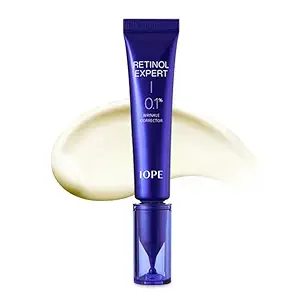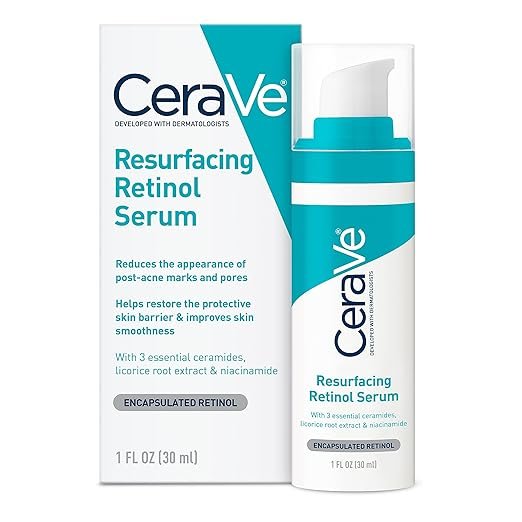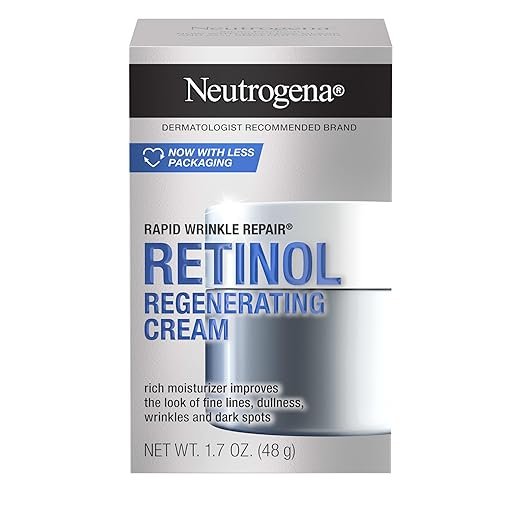It’s considered the gold standard in anti-aging, but using it correctly is key to unlocking its full potential.

Time Flies, but Not As Fast as Skincare Trends—Why Retinol is Still Champion in 2025!
If Ferris Beuller thought life was fast, he clearly didn’t spend much time on SkinTok. The social media skincare arena is changing at warp speed, with new “miracle” ingredients going viral every few days. From glass skin to snail mucin, the latest skincare trend promises bright, youthful skin, but few trends last the test of time.
One ingredient amongst all the fads is a known constant: retinol. It’s no longer just a trend—it’s science and proof behind the longest running resource in skincare, bringing transformation over the last 80 years. In fact, the chemist responsible for isolating retinoic acid first was awarded a Nobel Prize back in 1937—not just in the world of skincare—and helped transform medicine as a whole.
In 2025 retinol is stronger than ever with over 3000 formulations now in skincare that include serums, creams, and overnight masks. Whatever your concern—breakouts, fine lines, or dullness—there is a retinol waiting to become your next holy grail.
Selecting the Right Retinol For Your Skin is Tougher than it Sounds – Here is What You Should Know
When it comes to skincare, it can sometimes feel like a lot to try to find a product that targets your skin concern and skin’s goals. When you consider the multiple options available, it is not surprising that retinol always comes up in conversation for good reason.
“Retinol is renowned for being able to help reduce fine lines, smoothing rough skin texture, and speed cell turnover,” says Alanna Tran, cosmetic chemist and founder of BiotechBeauty.
Retinol is a common term used to identify a larger class of compounds called retinoids, all of which are derived from vitamin a.
Of the different classes of retinoids – retinol is the simplest and one of the better choices.
Retinol is sold over the counter, and is generally a common option for signs of aging or acne and does produce visible results especially if you use it consistently.
That said, you may be asking yourself “With so many options out there, how do I pick the right product for my skin type?” Knowing what retinol is – and how it works – can have a major influence on the likelihood of finding a product that complements, or supports.
3 Things to Know About Retinol Before You Integrate It into Your Skincare Routine
Retinol might be one of the most popular skincare ingredients on offer, but it is not one-size-fits-all. A form of retinoids, retinol is one of many vitamin A derivatives and is offered in various concentrations, formulations, and forms. While its benefits can be remarkable, choosing the correct product for your skin – and using that product correctly – is vital for minimizing irritation and maximizing results.
Learning this the hard way, even while working at a beauty publication, being educated on the science of vitamin A, and having direct access to some of the country’s top dermatologists, I clinically followed the usual process for starting retinol WAY too soon and without adequate preparation, leading to your typical frustrating experience of dryness, peeling, and irritation. When I paused, did my research, and tailored my experience, I was both pleasantly surprised and impressed.
To help you avoid experiencing a prolonged learning curve, this guide will clearly explain everything you should know about retinol, from its superb benefits to potential side effects and how to select the right type of retinol for your skin’s specific needs.
So read on for a thorough breakdown of retinol and how it works.
What is retinol?
Understanding Retinol: What It Is and Why It Changes Your Skin
Before we discuss the changing power of retinol, it is helpful to know that retinol is a derivative of vitamin A and is one of the best known anti-aging ingredients. According to Dr. Joshua Zeichner, NYC based board-certified dermatologist, “retinol increases collagen production, which helps build the skin’s structure and speeds up cell turnover for smoother texture, enhanced tone, and brighter appearance,”
Retinol is certainly not the only vitamin A compound available in skin care; retinal and retinyl palmitate (both over-the-counter options) and the stronger prescription version, tretinoin. The difference lies in how the skin handles them.
In order for these ingredients to work, they need to be oxidized in a two-step enzymatic process into retinoic acid the active component that will affect skin. “Retinol for example goes through a large enzymatic process.” explains Alanna Tran, a cosmetic chemist and founder of BiotechBeauty. “First, it is oxidized into retinaldehyde and then to retinoic acid. Once it becomes retinoic acid, it can bind to receptors in skin cells and produce significant cellular changes.
The two-step conversion process is why there are mixtures of levels of irritancy and effectiveness with the different retinoids. The decision about which to use depends on how risky your skin is, your skin care goals, and how fast you want results.
Knowing the Different Types of Vitamin A Derivatives in Skincare
The main difference among the different vitamin A-based skin care ingredients is how far they still have to go to convert to retinoic acid, the active form that provides real (noted) improvements to the skin.
Take retinol, for example: it is an over-the-counter product and the weakest in the vitamin A derivative category, and retinol has to convert to retinoic acid. There is a process your skin needs to go through, which means it may take several weeks to months (up to 12 weeks) before you see a noticeable difference in your skin. This slow conversion makes retinol much less irritating than other options.
At the other end of the spectrum are prescription treatments, such as tretinoin, which are already in their active form (retinoic acid) and begin impacting skin cell turnover immediately. So, while they are effective and fast-acting treatments, they pose a greater risk of side effects (redness, dryness, and peeling) related to their potency.
Other non-prescription retinoids, like retinaldehyde or retinyl esters, fall somewhere in the middle. They vary in strength and require a few or more conversion steps than retinol, depending on the formulation. In other words, products that are closer to retinoic acid in terms of a conversion chain tend to be stronger and more irritating.
What are the benefits of retinol?
Why retinol absolutely lives up to the hype
When I call retinol the most effective ingredient in skincare, I mean it. I’m not exaggerating—it’s simply true. Every retinoid has one superpower at its center: it speeds up skin cell turnover. And with that one ability, retinol can resolve just about every skin and complexion issue you can think of. Whether you’re struggling with acne, dark spots, hyperpigmentation, fine lines and wrinkles, or rough texture, retinol has the power to significantly improve it all. Here is what makes it so special:
Stimulate collagen production
With significant clinical and dermatological studies undertaken to support the use of retinol for smoother and firmer skin through increased collagen—an essential protein important for firmness and elasticity of the skin—retinol is a must-have for your skincare routine.
Accelerates Skin Cell Turnover
Retinol is one of the best things for skin because it helps promote natural exfoliation by shedding the dead, dull surface cells, revealing a brighter/fresher layer of skin under. This all leads to fewer dark spots, less uneven texture and tone, and less clogged pores—making retinol a great treatment to help with breakouts and acne.
Controls Excess Oil for Balanced Skin
Though the exact mechanisms for retinol’s effects on sebum production are not fully understood, dermatologists agree that retinol plays a role in balancing oil levels in the skin. Interestingly, some studies have concluded that certain kinds of retinoids may also reduce the appearance of pores.
How to use retinol?
Cruise Control with Retinol—How to Use It Right Without Damaging Your Skin
Retinol is not your normal skincare ingredient—it requires a little more care and patience. When used badly, retinol can actually cause some side effects such as redness, flaking and uncomfortable sensitivity. To avoid this, it is best to ease into it slowly.
Take it Slow and Steady
Since retinol recommended to be used slowly—especially for beginners—dermatologists suggest easing into retinol. “Start by applying it one night and not the next for 2 weeks,” says Dr. Zeichner. “Then you can switch to applying it two night in a row and rest the third for another 2 weeks. By then you will have a feel on how your skin is tolerating it and can usually apply it nightly by the one month mark.”
However, if at any time you notice dryness, tingling, burning or visible peeling you should take a break for a few days.
Key Dos and Don’ts for Application
If you want to avoid irritation, always use a moisturizer along with your retinol. You can put the moisturizer on prior to your retinol, after it, or even mix them together for a more gentle effect. And please, don’t use too much retinol—one pea-sized drop is plenty to cover your entire face.
By working with retinol before you rush into it.
Use retinol at night only
Why You Should Only Use Retinol at Night
Night time use of retinol is essential for both effectiveness and safety. Retinol increases your skin’s sensitivity to the sun, so the risk for sunburn and irritation increases as well. Dr. Zeichner explained that retinol works by thinning the stratum corneum or outermost layer of skin, increasing the likelihood of damaged and deactivated UV UV damage.
“Your skin will become more sun-sensitive regardless of whether you put retinol in the morning or at night, however the ingredient retinol also breaks down in sunlight,” says Dr. Zeichner. A nightly application of retinol is the smarter application since you will not need to worry about the UV rays from the sun breaking down retinol throughout the day, and your skin will be allowed to do a lot better work overnight while you sleep,
To keep your skin healthy and protected, ensure that you are practicing good habits and pair your nighttime retinol application with your daily broad-spectrum sunscreen each morning.
Be Careful Not to Overdo It with Actives
When using retinol into your routine, be careful to avoid strong active ingredients with it. The risk of irritation, dryness, and sensitivity can increase significantly when you use retinol in conjunction with acids like glycolic (a form of alpha hydroxy acid), salicylic (a beta hydroxy acid), or treatments like benzoyl peroxide. To avoid this problem, try to separate your use of each ingredient by days or consult your dermatologist to plan the best strategy for you.
Not Safe to Use in Pregnancy
Retinol and other vitamin A compounds may not be safe to use in pregnancy because of concerns related to fetal development. Moreover, most dermatologists do not recommend breastfeeding moms to use retinol, but there will be individual variation. Always consult your medical doctor for the safest skin care route.
What are the side effects of retinol?
Understanding Retinol Side Effects — And How To Mitigate Them
If you’ve tried retinol or researched, you likely have seen discussions about it causing irritation, and rightfully so. Dr. David Kim, a board-certified dermatologist in New York City, explains that overly applying retinol especially if you have sensitive skin can cause irritation in multiples ways. “The main takeaway is that if you’re retinol or over applying too often, you can have considerable irritation,” said Kim.
Usual responses could include (but are not limited to) peeling, dryness, redness, or increased sensitivity. Some people may also go through something called “retinol purge”. A “purge”, usually happens in the beginning a retinol routine, and is associated with potential breakouts or redness due to the process of quickly producing new skin cells underneath for blocked, clogged pores or follicles. It can be totally annoying but it should irrelevant, it is usually just a brief period of adjustment.
That said, there are many ways to manage those reactions. “You will want to start slow when introducing retinol to your skincare routine so your skin has time to acclimatize.
,” Dr. Kim says. “Even if you work up to use it nightly, start with just a couple nights of use per week and certainly use a thick moisturizer when you do.” The thick moisturizer can help buffer your skin when you’re using retinol.
If you had some discomfort, you can also try reducing how often you apply retinol or switching to a lower-concentrated option. If your symptoms are severe, like burning, pain, peeling, or persistent redness, consider stopping and getting professional advice. It’s important not to use the excuse of your “skin purging” for every reaction.
With all of that being said, some degree of irritation is general, especially at the beginning. It is important to keep in mind that all ‘normal’ reactions do not mean you have failed or that retinol isn’t for you. It is entirely possible to reap the benefits of retinol as long as you start gradually and support your barrier.
How to choose the best retinol for you.
Not All Retinoids Are Created Equal: Start Smart and Pick Wisely
It’s essential to keep in mind that not all retinoids are the same when you are starting to explore the world of retinoids. They are available in different strengths and various delivery systems, and what is right for you depends on both your skin-type and how well you tolerate retinoids. If you’re new to retinol or have delicate skin, begin with a lower-strength formula.
“A lower concentration initially, such as 0.2% to 0.3%, is a good idea for naiveté users,” says Dr. Kim, a board-certified dermatologist, “And once your skin learns to tolerate, you can continue to build up to 0.5%, and eventually 1%, if necessary.” Those that have used retinoids before may tolerate higher concentrations, but you should monitor for signs of irritation.
When choosing a formulation, skincare expert Tran suggests that you look for a hydrating retinol product that includes ingredients that stabilize the retinol formulation—so antioxidants would be great—I have even seen retinol products with probiotics! The ingredients added to the retinol formulation may help with dryness and can benefit your skin barrier. Tran said to pay attention to how the product is packaged: “Retinol can break down in air and light, which is why opaque, air-tight packaging is the best to look for.
Retinols Our Experts Love
You don’t have to break the bank to find something that works. Dr. Zeichner mentioned that the Neutrogena Rapid Wrinkle Repair line is an excellent choice. Its formula is based on retinol and hyaluronic acid in a moisturizer. This way, it provides hydration to the skin while still allowing for active changes and reduces the risk of irritation that is often linked to retinol use.

Dr. Kim loves this innovative treatment by Korean company Iope that, in addition to retinol, contains five forms of hyaluronic acid, biomimetic collagen, and multiple forms of peptides.

Retinol: the Skincare Miracle Employee with Amazing Results.
Retinol has established itself as a reputable player in the skincare world, regularly recognized as one of the most popular and talked-about ingredients. Many users have reported that it is the ingredient that changed their skin for the better, improved texture, and gave their skin back its glow. It can do the trick for stubborn acne, smooth fine lines, and add radiance. There is a lot it can do, but that doesn’t mean it is a product to jump right into—anything powerful requires consideration.
If you are new to retinoids or are simply finding the right formula to fit your routine, the key is listening to your skin. Determining what formulation and strength is right for you matters, whether you are looking for a reduction in breakouts, brightening dullness, or addressing early signs of aging. A good way to start is to begin slowly, using low concentration retinol, with a low frequency of use to allow your skin to adjust, thus avoiding unnecessary irritation while building for a long-term benefit.
With time and consistent use, the benefits will begin to present themselves. Retinol has been around for almost nine decades for good reason—it can refine, smooth, and help skin look firmer and more bouncy in a more youthful way. If you give it time, you may soon be thinking about what took you so long to invite such an impactful ingredient into your routine sooner.


